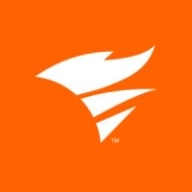


Find out what your peers are saying about Zabbix, Auvik, SolarWinds and others in Network Monitoring Software.
The return on investment is significant as the solution effectively reduces costs while being worth its expense.
Using Splunk has saved my organization about 30% of our budget compared to using multiple different monitoring products.
Anyone working in front-end management should recognize the market price to see the true value of end-user monitoring.
I have definitely seen a return on investment with Splunk Observability Cloud, particularly through how fast it has grown and how comfortable other teams are in relying on its outputs for monitoring and observability.
If there is no timely response, getting a resolution is more difficult.
We had contact with SolarWinds regarding the implementation, and they were helpful.
They have good technical support.
On a scale of 1 to 10, the customer service and technical support deserve a 10.
They have consistently helped us resolve any issues we've encountered.
They often require multiple questions, with five or six emails to get a response.
SolarWinds NPM is scalable and effective in handling large network infrastructures.
We've used the solution across more than 250 people, including engineers.
As we are a growing company transitioning all our applications to the cloud, and with the increasing number of cloud-native applications, Splunk Observability Cloud will help us achieve digital resiliency and reduce our mean time to resolution.
I would rate its scalability a nine out of ten.
The NPM product is stable, particularly when used for simple network monitoring.
I would rate its stability a nine out of ten.
We rarely have problems accessing the dashboard or the page.
Unlike NetScout or regular agents for APM, RUM has many problems during the POC phase because customer environments vary widely.
The documentation is adequate, but team members coming into a project could benefit from more guided, interactive tutorials, ideally leveraging real-world data.
In future updates, I would like to see AI features included in Datadog for monitoring AI spend and usage to make the product more versatile and appealing for the customer.
There should be a clearer view of the expenses.
SolarWinds needs to upscale on observability and add full-fledged observability features, including security features.
Customers have given feedback about the delayed response times from the technical team.
Features such as taking backup of the devices or configurations of the devices can be included in further versions of SolarWinds NPM.
The out-of-the-box customizable dashboards in Splunk Observability Cloud are very effective in showcasing IT performance to business leaders.
The next release of Splunk Observability Cloud should include a feature that makes it so that when looking at charts and dashboards, and also looking at one environment regardless of the product feature that you're in, APM, infrastructure, RUM, the environment that is chosen in the first location when you sign into Splunk Observability Cloud needs to stay persistent all the way through.
There is room for improvement in the alerting system, which is complicated and has less documentation available.
The setup cost for Datadog is more than $100.
The solution is considered expensive.
Pricing-wise, SolarWinds NPM is more expensive than PRTG.
Splunk is a bit expensive since it charges based on the indexing rate of data.
It is expensive, especially when there are other vendors that offer something similar for much cheaper.
It appears to be expensive compared to competitors.
Our architecture is written in several languages, and one area where Datadog particularly shines is in providing first-class support for a multitude of programming languages.
The technology itself is generally very useful.
The most valuable feature for us is the database performance analyzer, which we use a lot.
SolarWinds NPM has specific modules for monitoring different network capabilities, which provides rich features for carrying out specific tasks.
It provides a detailed overview of the network, which is valuable.
Splunk provides advanced notifications of roadblocks in the application, which helps us to improve and avoid impacts during high-volume days.
For troubleshooting, we can detect problems in seconds, which is particularly helpful for digital teams.
It offers unified visibility for logs, metrics, and traces.
| Product | Market Share (%) |
|---|---|
| SolarWinds NPM | 4.4% |
| Datadog | 3.1% |
| Splunk Observability Cloud | 1.2% |
| Other | 91.3% |



| Company Size | Count |
|---|---|
| Small Business | 78 |
| Midsize Enterprise | 42 |
| Large Enterprise | 82 |
| Company Size | Count |
|---|---|
| Small Business | 59 |
| Midsize Enterprise | 33 |
| Large Enterprise | 84 |
| Company Size | Count |
|---|---|
| Small Business | 20 |
| Midsize Enterprise | 10 |
| Large Enterprise | 43 |
Datadog integrates extensive monitoring solutions with features like customizable dashboards and real-time alerting, supporting efficient system management. Its seamless integration capabilities with tools like AWS and Slack make it a critical part of cloud infrastructure monitoring.
Datadog offers centralized logging and monitoring, making troubleshooting fast and efficient. It facilitates performance tracking in cloud environments such as AWS and Azure, utilizing tools like EC2 and APM for service management. Custom metrics and alerts improve the ability to respond to issues swiftly, while real-time tools enhance system responsiveness. However, users express the need for improved query performance, a more intuitive UI, and increased integration capabilities. Concerns about the pricing model's complexity have led to calls for greater transparency and control, and additional advanced customization options are sought. Datadog's implementation requires attention to these aspects, with enhanced documentation and onboarding recommended to reduce the learning curve.
What are Datadog's Key Features?In industries like finance and technology, Datadog is implemented for its monitoring capabilities across cloud architectures. Its ability to aggregate logs and provide a unified view enhances reliability in environments demanding high performance. By leveraging real-time insights and integration with platforms like AWS and Azure, organizations in these sectors efficiently manage their cloud infrastructures, ensuring optimal performance and proactive issue resolution.
SolarWinds NPM is a network monitoring solution that enables you to detect, diagnose, and resolve network performance issues and outages quickly and efficiently. The solution is a powerful tool that can help you increase service levels, reduce downtime with multi vendor network monitoring, simplify the management of complex network devices, improve operational efficiency, and much more.
SolarWinds NPM Features
SolarWinds NPM has many valuable key features. Some of the most useful ones include:
SolarWinds NPM Benefits
There are several benefits to implementing SolarWinds NPM. Some of the biggest advantages the solution offers include:
Reviews from Real Users
Below are some reviews and helpful feedback written by PeerSpot users currently using the SolarWinds NPM solution.
PeerSpot user Andrew N., Senior Network Engineer at Element Critical, says, “The "Performance Analyzer" feature is the solution's most valuable aspect. It's able to do the bounded graphs of all the interface stats, from errors to broadcasts and to current traffic. With a click of a button you're able to, in one interface, look at historical data for those items.” He also adds, “From the troubleshooting point of view, just having that peace of mind is great. And, The solution is extremely stable. We haven't had any issues in that regard. We haven't had issues with bugs, glitches, or crashes."
Daniel S., Systems and Data Warehouse Supervisor at MMSD, mentions, “The alerting and usage tracking is a valuable feature because it alerts us when we're getting near capacity on disk space, network utilization or processor utilization. It helps us manage our capacity and enables us to be proactive.”
A Senior Vice President and CIO at a financial services firm explains, “As we look to add more servers to our virtual environment and to understand the impact, the solution allows us to dig into the historical charts related to capacity planning. It also gives us visibility of spikes and allows us to track down the reasons for their occurrences. So too, it makes room for potential processes that have gotten hung or runaway and to know when it's time to reboot a server or service.”
Dinesh N., Digital Innovation at Bobcat Company, states, “The best part of the solution is the sharing display. It gives a general public ID wherein everyone can link to a public display. That's a good feature.”
Fazal A., Implementation & Support Specialist at 360Factors, comments, “We have configured multiple alerts for our network devices, including routers and switches, so that we are notified if any interface goes down. In the event an interface goes down, we have multiple reports that include availability monitoring, network uptime monitoring, and network downtime monitoring. These reports are on multiple schedules such as the end of the day, end of the last business day of the week, monthly, and quarterly. This gives us the ability to provide reports to our management and let them know the performance of our network.”
Splunk Observability Cloud offers sophisticated log searching, data integration, and customizable dashboards. With rapid deployment and ease of use, this cloud service enhances monitoring capabilities across IT infrastructures for comprehensive end-to-end visibility.
Focused on enhancing performance management and security, Splunk Observability Cloud supports environments through its data visualization and analysis tools. Users appreciate its robust application performance monitoring and troubleshooting insights. However, improvements in integrations, interface customization, scalability, and automation are needed. Users find value in its capabilities for infrastructure and network monitoring, as well as log analytics, albeit cost considerations and better documentation are desired. Enhancements in real-time monitoring and network protection are also noted as areas for development.
What are the key features?In industries, Splunk Observability Cloud is implemented for security management by analyzing logs from detection systems, offering real-time alerts and troubleshooting for cloud-native applications. It is leveraged for machine data analysis, improving infrastructure visibility and supporting network and application performance management efforts.